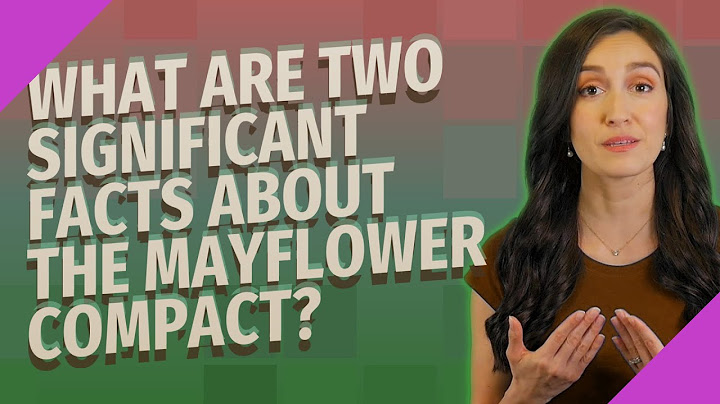 Text Solution Show
Solution : Magnifying power of a compound microscope is `M = (L)/(f_0)(1 + (d)/(f_e))` <br> As `f_0 and f_e` both depend on colour of light, therefore, magnifying power of a microscope does depend upon colour of light.
The magnification power of a compound microscope does not depend upon
The focal length and aperture of the eye lens The apertures of the objective lens Tube length of the microscope None of the above
Next Question A vertical microscope is focused on a point at the bottom of an empty tank. Then water (μ=4/3) is poured into the tank up to a height of 4 cm. After which a liquid that does not mix with water is poured over it up to a height of 2 cm above the water. The refractive index of the liquid is 3/2. What should be the vertical distance through which the microscope must be moved to bring the object in focus again?
1.The focal length and aperture of the eye lens 2.The apertures of the objective lens 3.Tube length of the microscope 4.None of the above Answer:2 Posted Date:-2021-12-08 05:25:21
Guys, does anyone know the answer? get the magnification power of a compound microscope does not depend upon from screen. In compound microscope, magnification does not depend uponClick here👆to get an answer to your question ✍️ In compound microscope, magnification does not depend upon  Question In compound microscope, magnification does not depend uponAFocal length of lensBNumerical aperture of objective lensCTube length of microscopeDAll of the aboveHard Open in App Solution Verified by Toppr Correct option is B) The numerical aperture of a microscope objective lens is a measure of its ability to accept light and resolve fine specimen detail at a fixed object distance. It is the important parameter to any optic fibers. It determines the resolving power of the objective. The higher the NA of the total system, the better the resolution. The magnification does not depend on numerical aperture. Thus, the correct answer is option B.Was this answer helpful? 5 0 अधिक देखने के लिए क्लिक करें स्रोत : www.toppr.com The magnifying power of a compound microscope does not depend uponThe magnifying power of a compound microscope does not depend upon  Home > The magnifying power of a compound microscope does not depend upon Question The magnifying power of a compound microscope does not depend upon - A the focal length of the eyepiece. B the aperture of the objective lens. C tube length of the compound microscope. D None of the above Solution The correct option is B the aperture of the objective lens. We know that, ( i ) Magnification of the compound microscope when the final image is formed at the least distance of distinct vision is given by, m = v o | u o | ( 1 + D f e ) ( i i ) Magnification of the compound microscope when the final image is formed at the infinity is given by, m = v o | u o | ( D f e ) So, from ( i ) and ( i i ) , we can see that, the magnifying power depends on - ( a ) the focal length of the eyepiece. ( b ) tube length of the compound microscope as L = | v o | + | u e | . But it does not depend on the aperture of the objective lens. Hence, option ( B ) is the correct answer. Physics Suggest Corrections 0  SIMILAR QUESTIONS Q. The magnifying power of the objective of a compound microscope is7. If the magnifying power of the microscope is 35 , then the magnifying power of eyepiece will be : PhysicsNCERTStandard XII Q. The magnifying power of a compound- microscope increases when ,PhysicsNCERTStandard XII View More PEOPLE ALSO SEARCHED FOR 10 . In order to get an overall magnification of 100 when image is formed at 25 c m from the eye, the focal length of the eye lens should be :(in c m ) Physics Q. A proton of mass1.67 × 10 − 27 k g and charge 1.6 × 10 − 19 C is projected with a speed of 2 × 10 6 m s − 1 at an angle of 60 0 to the X-axis.If a uniform magnetic filed of 0.104 tesla is applied along Y-axis, the path of proton is Physics View More अधिक देखने के लिए क्लिक करें स्रोत : byjus.com In compound microscope magnification does not depend class 11 biology CBSEIn compound microscope magnification does not depend upon A Focal length of lens B Numerical apertures of objective lens C Tube length of microscope D All of the above In compound microscope, magnification does not depend uponA. Focal length of lens B. Numerical apertures of objective lens C. Tube length of microscope D. All of the above Answer Verified 168.3k+ views Hint: A compound microscope uses two lenses which are the objective lens and eyepiece. When a small object is placed beyond the focus of an objective lens, you can see a highly magnified, virtual and inverted image of the object at least distance of distinct vision from the eye. By using a compound microscope, great detailing of various small objects can be obtained very clearly.Complete answer:> Focal length of lens: Focal length has some relation to do with magnification. A higher focal length results in a high magnification factor. The more long focal length is, narrow will be the angle of view and hence there would be increase in the magnification. Wide angle of view will result in low magnification. > Numerical apertures of objective lens: It estimates the resolving power of an objective. It has the ability to gather light and to resolve fine details of any specimen that is to be observed. It does not relate to the magnification. > Tube length of microscope: The tube body of the microscope separates the objective lens and the eyepiece. It also checks for the alignment of the optics. Changes in the objective lens are made depending on the particular projection distance which is very specific to the magnification. Therefore, it does depend on magnification. Hence, the correct answer is option (B).Note: Compound microscope is very easy and convenient to use. It has multiple lenses that makes it more special because great detailing can be observed by using it. These microscopes allow magnification to a much greater extent compared to stereo or light microscopes. However, one might face problems in having an image with big contrast.Read More  Latest Vedantu courses for you Grade 11 Science | CBSE | SCHOOL | English CBSE PCM (2022-23)Academic year 2022-23 ENGLISH Unlimited access till final school exam School Full course for CBSE students 500+ chapter specific short courses Physics Chemistry Maths ₹5,000 per year Select and buy Trending doubts Sporophyte of Riccia contains a Spores elaters and class 11 biology CBSE Name the part of the brain that controls involuntary class 11 biology CBSE Which one of the following is an example of crustose class 11 biology CBSE More common type of conjugation in Spirogyra is A Terminal class 11 biology CBSE Name the Largest and the Smallest Cell in the Human Body ? Spirogyra belongs to the class a Rhodophyceae b Cyanophyceae class 11 biology CBSE Which of the following statements about Spirogyra is class 11 biology CBSE Dolipore septum is the characteristics of A Myxomycetous class 11 biology CBSE Chloroplasts present in Spirogyra are A Ribbon shaped class 11 biology CBSE Related Questions Can you pull DNA from urine? Milk vine weed is being eradicated from citrus with the help of which of the following herbicides? A) 2,4 - D B) Phytophthora palmivora C) Pyrethrin D) None of the above अधिक देखने के लिए क्लिक करें स्रोत : www.vedantu.com
Do you want to see answer or more ? |

Pos Terkait
Periklanan
BERITA TERKINI
Toplist Popular
#2
Top 5 wilo fluidcontrol schaltet nicht ab 2022
1 years ago#3
#4
Top 8 warum kein blutspenden nach piercing 2022
1 years ago#5
#6
Top 8 o que é pirangagem 2022
1 years ago#7
#8
Top 8 o que é gluten free 2022
1 years ago#9
#10
Top 8 mondeo mk3 türgriff öffnet nicht 2022
1 years agoPeriklanan
Terpopuler
Periklanan
Tentang Kami
Dukungan

Copyright © 2024 ketiadaan Inc.


















